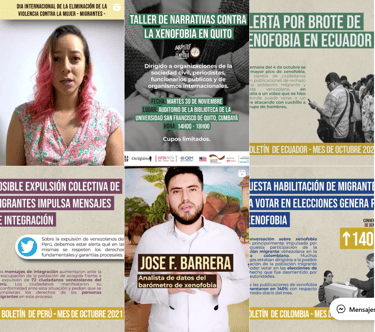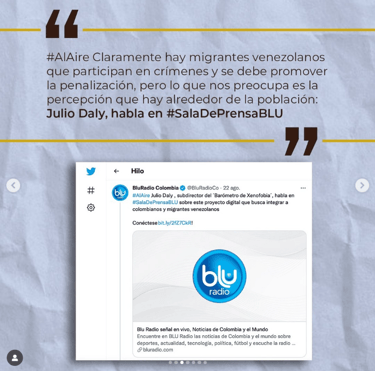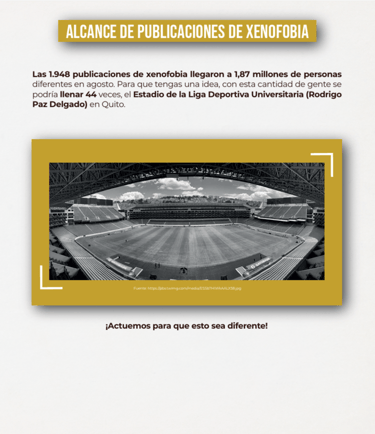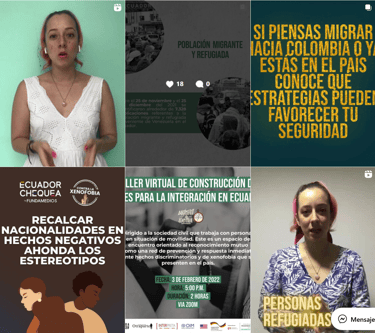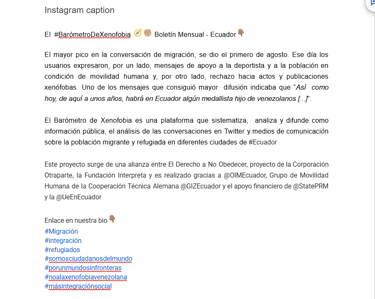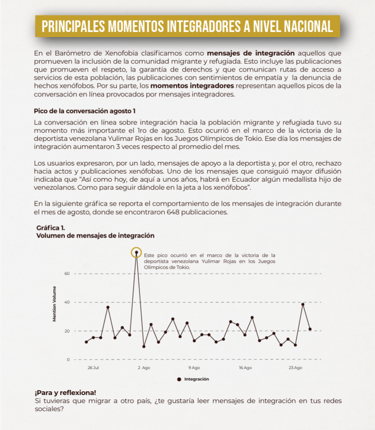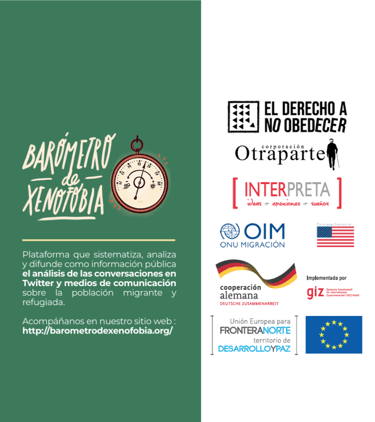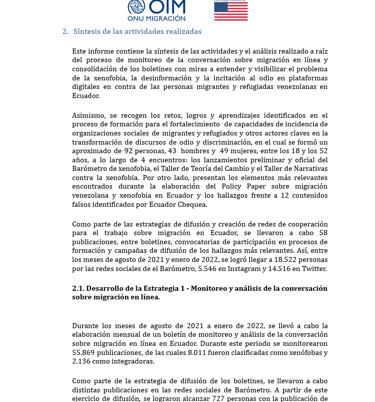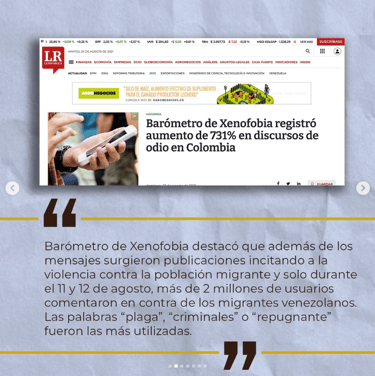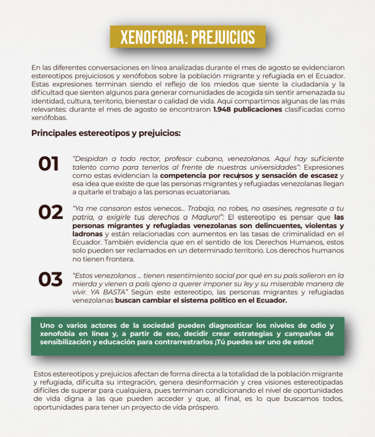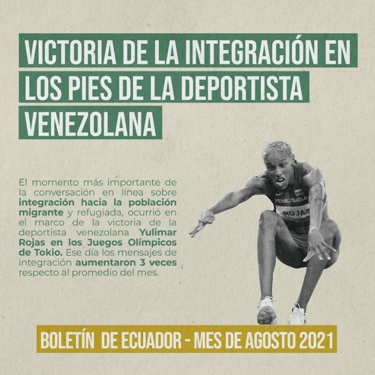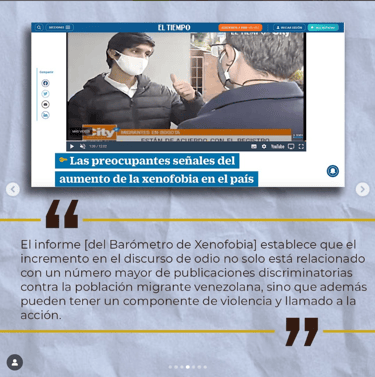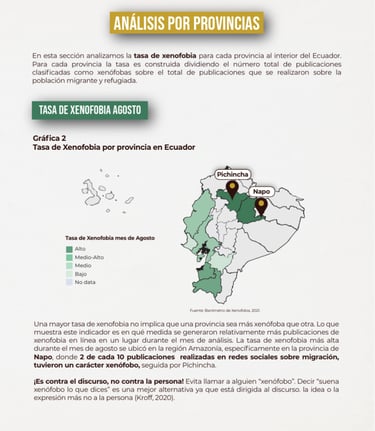Xenophobia Barometer: Transforming Data into Narratives against Disinformation
Translating complex data into digital narratives to combat misinformation and xenophobia.
PORTAFOLIO
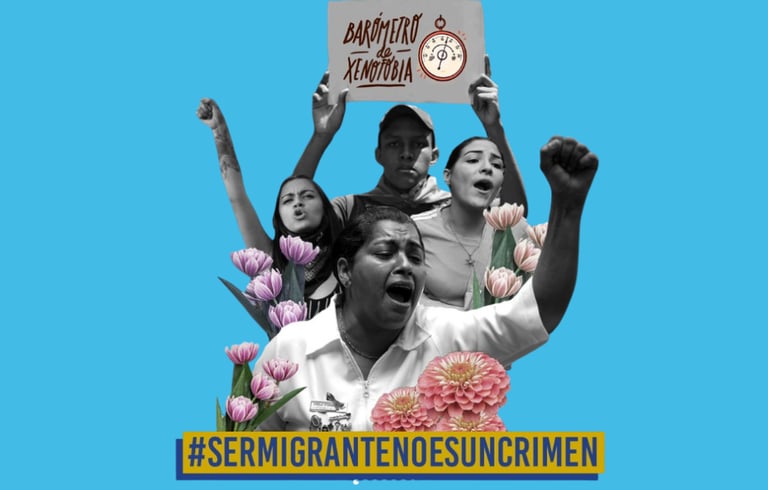

My Rol: Content Strategist and Data Communicator
The Challenge
In a context of growing polarization, the Xenophobia Barometer was born to counteract the dangerous wave of disinformation and hate speech on social networks against the Venezuelan migrant population in Latin America. The challenge was monumental: we had a powerful technological tool that collected millions of data, but that raw information was incomprehensible to the general public, journalists and organizations. My mission was to be the bridge: to translate that ocean of complex data into clear, accessible and fast-acting digital communication that could mitigate hate narratives, educate public opinion and serve as a reliable source for decision-making.
My Strategic Solution
My strategy focused on a constant cycle of "Listen, Analyze and Update". I developed a system to turn monitoring findings into relevant and evidence-based communication products, keeping the Barometer a reference in the analysis of xenophobia in the region.
- Translating Data into Impact Bulletins: My main task was to dive into the monthly technical reports and transform them into public, visual and easy to understand bulletins. Not only did I present the data, but I built a narrative that explained the why behind the xenophobia spikes, connecting them to news and political events.
- Creating Audiovisual Content for Networks: I knew that to combat the speed of misinformation we needed an agile format. I created scripts for short videos (Reels/TikTok) that synthesized the most shocking findings, such as the one that explained how a soccer match could increase xenophobic posts by 261% in a single day. This allowed us to bring the data to a much wider audience.
- International Cooperation Project Management: I led the communication deliverables for a project with partners in Germany (GIZ) and Ecuador (IOM). This included not only the creation of reports, but also the conceptualization and logistics of field activations to sensitize the local community.
- Proactive Content Development: I understood that we should not only react to hate, but also build narratives of integration. Therefore, I researched and created a line of service content for the migrant community, disseminating valuable information on procedures, access to mental health and support networks. In addition, I managed the logistics of Twitter Spaces conversations with experts to deepen the findings of our reports.
Impact Results
The impact of our work was tangible and far-reaching. We were able to make visible the scale of the xenophobia problem, demonstrating, for example, that in a single month in Ecuador, the analyzed hate publications reached 1.17 million people. Thanks to the rigor of our analysis, the Barometer quickly became an authoritative source of reference, being recurrently cited by national media to contextualize crises and public debates. This level of credibility allowed us to collaborate with and be endorsed by high-level strategic allies, including the IOM (UN Migration), the German Cooperation (GIZ) and the European Union, validating the importance and seriousness of our work.
